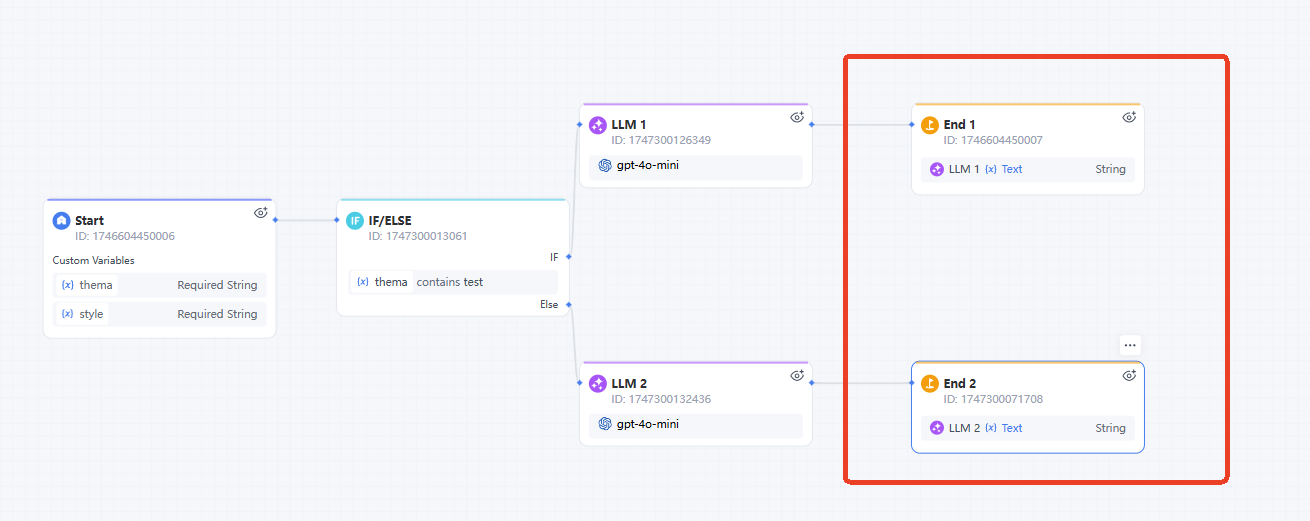Definition
The end node is the termination of the Service Workflow. It is used to terminate the process, end the execution of the current service workflow, or output variables, which can be connected to an external system.
How to Configure:
When you create a new Service Workflow, it will automatically have an End Node. You can also click the "+" button on the panel to add an end node for each branch. If you do not need to output variables when the process ends, you do not need to configure it.

Output Variable
Click the + sign in the upper right corner to add multiple output variables at the same time.

Variable Name: Required
Variable Description: Optional
Variable Type: See the table below
| Parameters | Description | Example |
|---|---|---|
| Variable | Variables used in the workflow serve to store and transfer data. They can be modified and referenced throughout the workflow and shared between different nodes, enhancing both flexibility and reusability. | Customer service scenario: When a customer initiates a consultation, the customer service system first retrieves the customer's basic information through the access node—such as customer ID and consultation channel (e.g., telephone, online chat). This information is stored in the variable "customer_basic_info". In the end node, select "customer_basic_info" to output the customer's basic information. |
| String | A parameter of string type | "hello" |
| Number | A parameter of numeric type | 123 |
| Bool | A Boolean parameter with true or false values. | true |
| Object | A parameter of object type, typically in key-value pairs. | {"name": "John", "age": 30} |
| Array[String] | A parameter of string array type, where each element is a string. | ["apple", "banana"] |
| Array[Number] | A parameter of numeric array type, where each element is a number. | [1, 2, 3] |
| Array[Bool] | A parameter of Boolean array type, where each element is a Boolean value (true or false) | [true, false, true] |
| Array[Object] | A parameter of object array type, where each element is an object. | [{"name": "Alice", "age": 25}, {"name": "Bob", "age": 35}] |
Note:
- Each service-based workflow requires at least one end node. If there are multiple branches, each branch can have its own end node. Conversational workflows do not require an end node.
- After entering or selecting a variable, you must choose the correct variable type.
- No new nodes can be added after the end node.
Leave a Reply.